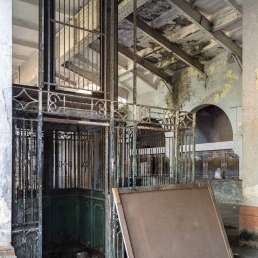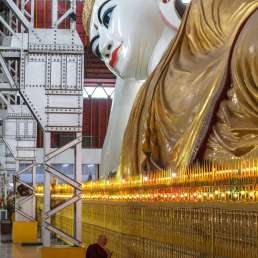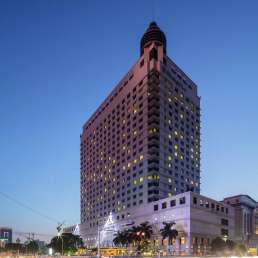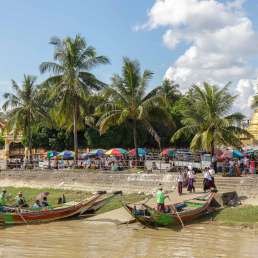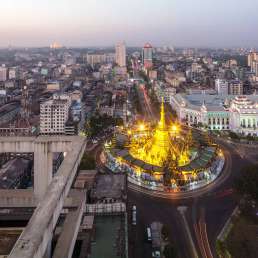Formerly: Cox & Co.
Address: 43/45 Pansodan Street
Year built: 1921
Architect: Unknown
The building was originally Cox & Co.’s Burma headquarters. Cox was a tradition-rich company with roots stretching back to the 18th century. It offered banking services to British military personnel. Business boomed during the First World War. Its Charing Cross branch in London had to stay open 24 hours a day to cash cheques for officers returning from the front. The company then opened offices in regions where British or colonial troops were stationed. The Rangoon branch opened in 1921. But Cox’s wartime profits were hard to maintain in peacetime: by 1923, the company was forced to scale back its operations abroad and sell its “Eastern” branches to Lloyd’s Bank. Lloyd’s itself was a latecomer to the colonial business, and the acquisition of Cox & Co. represented its first foray into the region.
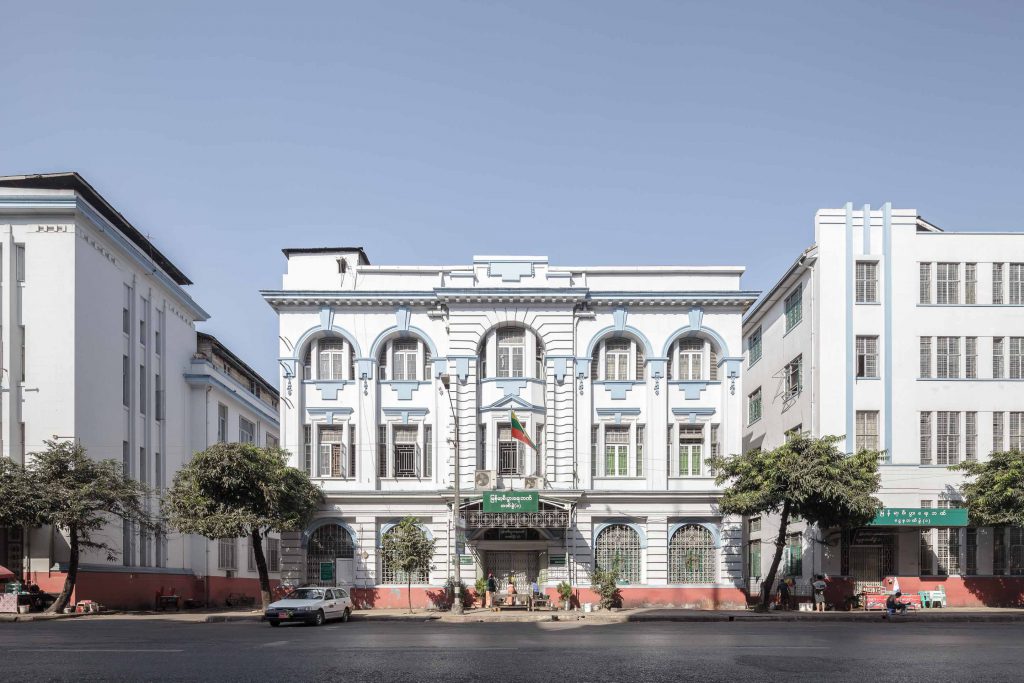
Lloyd’s not only took over the banking side of Cox & Co.’s business, but also its travel and shipping agency. This may explain why this building is sometimes still called the “Bibby Line Building”. Since 1889, the Bibby Line Company ran a regular steamboat service between Liverpool and Rangoon. It took about one month and cost GBP 50 at the time (about 5,000 in today’s money). By the 1920s, several boats were making the profitable journey and several agents sold tickets in Rangoon, including Cox & Co. (and later Lloyd’s) and Thomas Cook & Sons, who had their offices on Merchant Road. Despite a sharp fall in the Burma trade following independence, the Bibby Line service continued well into the 1950s. By then, competition from aeroplanes was already stiff. The British Overseas Airways Corporation (one of the two forerunners to modern-day British Airways) was serving Rangoon from London and other destinations within the former Empire.
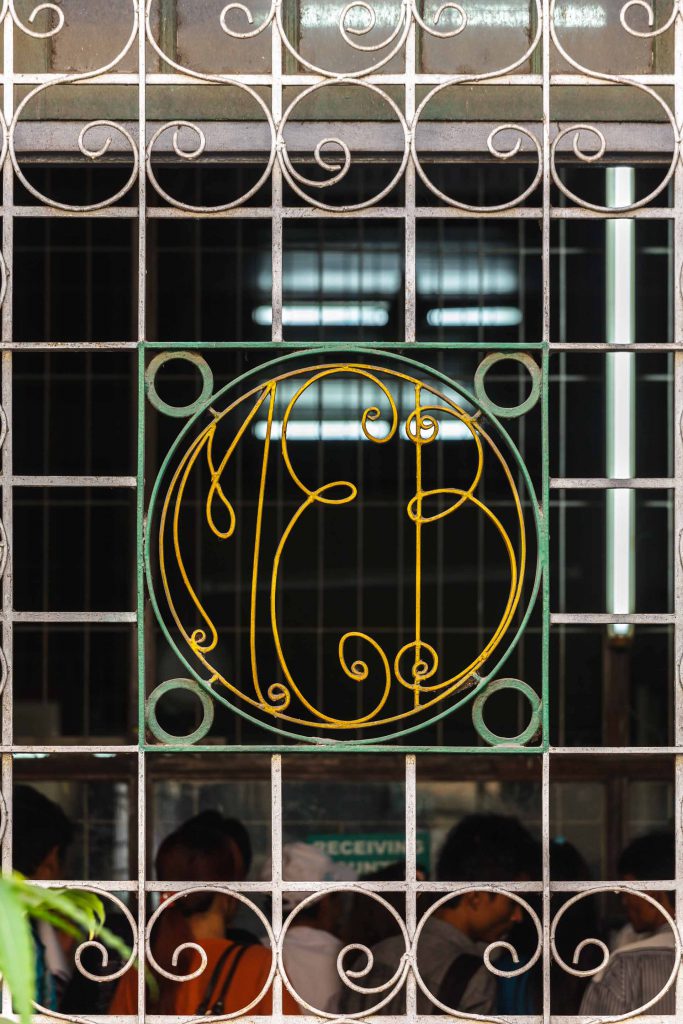
Today, the building’s new lick of baby blue and white paint gives it away as one of Myanma Economic Bank’s downtown branches. Most branches received a similar facelift in the last couple of years. The windows on the ground floor are covered with wrought-iron bars bearing the initials MEB. The three-storey building is stately but appears less commanding compared to the later and taller additions surrounding it on Pansodan Street. The only non-colonial building in the vicinity is just to the MEB’s right—the Myanma Economic Savings Bank Branch 1.
